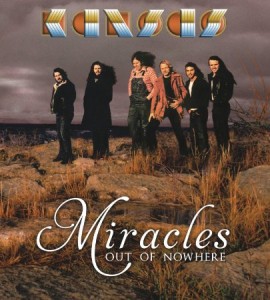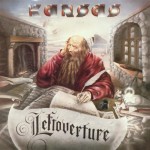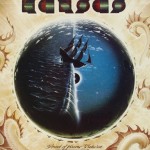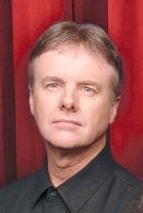In the 1970’s, Kansas arguably achieved a level of popularity that was unmatched by any other American progressive rock band, thanks to radio-friendly songs like “Dust in the Wind”, “Carry On Wayward Son”, and “Point of Know Return”, songs that still regularly show up on the playlists of classic rock radio. Their notable albums include their 1974 self-titled debut, 1976’s Leftoverture, and 1977’s Point of Know Return.
The band’s current line-up includes two original members: Phil Ehart on drums and Richard Williams on guitar. This interview with Ehart was for an article on the documentary film Kansas: Miracles Out Of Nowhere that premiered at the Santa Barbara International Film Festival on 2/2/15. It was done by Skype on 2/14/15.
Jeff Moehlis: I’m guessing that this was the first time you saw the documentary on the big screen. How do you feel about how it turned out, and how it was received by the audience?
Phil Ehart: It was the first time I’d seen it on a screen that large, in a real theater packed with people [laughs]. I’d seen it on a couple smaller screens, but nothing of that magnitude and with that audience. Being involved with making the film, like I have been for the last two years, it’s the kind of thing where you think you know the film until you see it in front of people, and see how people react. A lot of things people laughed at that I didn’t think they’d laugh at, and then other things that I thought they’d just crack up over nobody said a word or laughed at all. I’ve never done a film, I’ve never been part of making a film, so all this is new to me. But obviously at the end of the film when the credits stopped rolling and the film was over, when the whole crowd stands up and gives you a two minute standing ovation, that is definitely something I didn’t expect. That was very gratifying, and somewhat emotional. You just kind of go, “Oh my gosh, I guess they really liked it.” It was a great experience. It was a great experience all the way around.

JM: Can can tell us a little bit about how the documentary came together?
PE: It was really spurred by our 40th anniversary. It was coming our way, you might say, since it happened last year. Before that, Budd Carr and I had talked about the possibility of doing something, a film possibly. And Rich and I had talked many years ago about doing a book, maybe an iBook. There was always talk of doing something special, but Budd was really great because he introduced me to Charley Randazzo. And once we had a director on board… I didn’t know how to make a film, and obviously Budd’s been involved in a lot of films and documentaries, but he knew that we needed a director. Then of course I had to talk to the guys in the band, and they had to sign off on it, and they had comments on what they wanted. And of course Sony had input. So once you add up Budd and Rich and Charley and the guys in the band and Sony and myself [laughs], there were a lot of people there. It really was never just one person that stood up and said “Let’s do this”, and delivered it. It definitely was a group effort. That’s how it came it came together.
JM: I liked how it really remained positive in spirit, but it didn’t feel whitewashed.
PE: I appreciate that.
JM: Presumably that was a conscious decision to keep it positive?
PE: Well, it was. It’s a good story, and that’s what we talked about at the beginning, as a band. It’s a good story. And if it’s a good story and a true story, and kind of a miraculous story, you don’t really need a lot of other stuff that doesn’t affect the story. It was a hard enough road as it was, without adding other periphery personal stuff. You know, some of the guys said to me, “Look, I’ve got two or three kids. I don’t want to drag all this stuff out that I did 30 or 40 years ago.” They were right. It doesn’t add to the story. So we just asked ourselves, “Does this add to the story?” “No, it doesn’t.” “Then let’s not put it in.” So, yeah, I think it’s a good story, where these six guys came from and where they ended up, and what that trip was like. And that’s the story we told. If people want an expose, tell-all type of dirty laundry thing, then this isn’t really for you. It’s a very positive, uplifting type of story that I think can apply to a lot of people.
JM: When you went through this process, reflecting on events that happened 35 to 40 years ago, was there anything surprising that you learned about yourself or the band, that maybe at the time you didn’t realize?
PE: Well, that’s a really good question [pause]. I think a lot of us didn’t really realize at the time how famous we were. You know, as we went back and started talking to promoters and people and places we had sold out, and the amount of records we had sold, and talking to record company people. I think a lot of us just didn’t realize, wow, we were actually a pretty big deal for a while [laughs]. And it’s one of those things, because you’re on the inside playing the gigs and traveling and all this kind of stuff, you never really have the chance to sit back and go, “My goodness, we really sold a lot of records. We were on the radio a lot. We really had some good things happen to us.”
And I think we also learned, we didn’t really realize at the time how much we depended on each other. It really truly was a band of six guys. There was no real leader of the band. It was just the six of us, arms linked, taking on the world. It was one of those things that at the time, since we’d never been through it before, we just didn’t realize what we were going through. I think in making this film, it kind of brought that out. We were all dependent on each other.
And how important Don Kirshner was. “That just happens to everybody.” Well, no. Someone like Don Kirshner does not come along very often in people’s careers. Again, we were very thankful for what he had done, and didn’t really realize all the stuff he had done for us, and how he hung in there with us, until we went back and made this film.
JM: In the film, Steve said that everyone brought something special to the band, and clearly that’s the case. From your perspective, how do you perceive your own role in the band, back then and heading into the future?
PE: I guess I was just part of the band back then. We all had our musical roles. I was kind of in charge of the album covers, and how the band was perceived by the public as far as the album covers. Because that was really your internet back then. You learned everything from the album covers. You learned everything about the lyrics and the band, who they were, where they from, and what instruments they used, and what instruments they endorsed. That was all on there. So that was kind of my world, making sure that every album cover – the titles, the artwork, and everything – was in line with what we wanted to do. As well as playing drums. For those five years, that was my role. Steve and Kerry, of course, wrote the songs, and we all worked on song arrangements. You know, just being supportive of each other. Lots of times, you can mean a lot to a band by just being there, being there and being supportive. Everybody definitely had a role, and that was mine, I guess.

JM: One of the amazing things that the documentary covered was how Kerry brought in your two biggest songs at the last minute. What was going through your head when you first heard a song like that? Were you blown away, or were you thinking, man, I thought we were done with the album and now we have to keep going?
PE: You have to remember it was something we’d never been through before. It wasn’t like we had a lot of songs that were hit songs. We didn’t even know what a hit was – pretty much still don’t. But when you hear something like “Carry On Wayward Son”, you just know that it’s not the run-of-the-mill Kansas song. There’s something about that that appeals to all of us, and probably it appealed to a lot of other people. The same thing when “Dust in the Wind” came along. And don’t forget, between those two songs we had “Point of Know Return”, which was like a Top 20 radio hit for us, too. So it went from “Carry On Wayward Son” to “Point of Know Return” to “Dust in the Wind”. It was just, boom, boom, boom, right in a row. We were on the radio a lot. Lots of times you just have to go by your gut instinct. Your gut will tell you that that’s a great song. You go with it, and you just hope everybody else believes it, too. We didn’t have a crystal ball, that’s for sure. But we were very fortunate that Kerry wrote “Dust” and “Wayward Son” when he did. Yeah, they both kind of were accidental.
JM: Speaking of the song “Point of Know Return”. That’s one where you’re a co-writer. What was your contribution, and what did the other guys bring to the song?
PE: My contribution to “Point of Know Return”… With Peter Lloyd, I had already begun the album cover. If you remember, it’s the ship going over the edge of the world in to the universe, or whatever. So we had the title and the image, and Steve called me and said, “Hey, I’d like to write a song called ‘Point of Know Return’, and use that imagery of guys being on a ship as a lyrical type of thing,” and I said, “Yeah, OK.” It was just a concept that I had had for the album cover, as well as the title, which of course he used in the chorus. So that was my contribution to that song – coming up with the title and the artistic imagery.
JM: Another song that wasn’t in the documentary that you co-wrote was “Play the Game Tonight”. What was your contribution on that one?
PE: Just lyrics. And also finding the song. It had been submitted to the band as an outside song, and it kind of had been passed on. I went back and revisited it, and I thought, “That’s a really good song but we have to make it into our own.” So I remember me and Kerry and, I think, Rich – I can’t remember all of us – we got in the room and took the lyrics to the song – it was called “Stay with Me Tonight” – and we changed title into “Play the Game Tonight” and made it into a Kansas song. Kerry wrote the violin parts in the middle and stuff. Just being a band, working on songs.
JM: When “Carry On Wayward Son” became a huge hit, did that affect the way you guys approached the next album, Point of Know Return?

PE: It probably did, because that would be something we had to follow up. So now, Leftoverture had sold three or four million copies, “Carry On” has been all over the place and all over the radio, so now we have make another album. So I think it added pressure. It added pressure and Kerry and Steve came through and we made a great album that even surpassed Leftoverture in sales. It’s because of “Dust in the Wind” and “Point of Know Return”. Those two songs gave us such a springboard right off the bat. To have “Point of Know Return” go Top 20 and then have “Dust in the Wind” go Top 5. You have that back to back, plus we’re on the road playing all the time. We were fortunate. But, yes, there was pressure.
JM: What advice would you give to an aspiring musician?
PE: Music has to come from the heart. It really does. It has to come from the heart. If you have a passion for music, then play it as long as you can. If you play music because you want to make millions of dollars, eh, you’re probably going to be disappointed. Not for sure, but chances are. So if you play music and have a passion for it and love it and have fun doing, I just don’t think you can ever go wrong. You just have to wait and see how it turns out. But you have to have fun doing it. Just keep having fun.
JM: In the documentary, there were a couple of really great stories. There was the story about the free beer, and there was the story about Steven Tyler. Were there any stories like that that you couldn’t fit into the documentary that you wish you could’ve included?
PE: I can tell you that a lot of those stories will be on the bonus disc. We have a one hour bonus disc that you can get in the Limited Edition. It’s only in the Limited Edition – it’s not in the commercial edition. That’s a one hour bonus disc including tons of stuff like that. But we didn’t want the documentary to be two and a half hours long.
JM: What’s next for the band?
PE: As I try to explain to people, the documentary is about a band that existed a long time ago. There’s been many incarnations of Kansas since then. So the documentary is just a quick snapshot in time of those five albums. That ended in ’78 [laughs]. It’s been a long time since then. Kansas has gone through all kinds of stuff. We obviously still exist today, we still tour. We just got a new singer Ronnie Platt – Steve Walsh retired – and Ronnie’s singing great. We’re looking hopefully to do a new record in 2016. We just continue to tour, and love to tour and love to play. We’ve got great music. People love to come see us. We’re just very fortunate to still be here. So those are the plans – to keep Kansas music out there.


I’m excited to get a hold of Miracles out of Nowhere. I’ve seen all of the clips that are online. I got a kick out of the band meeting Don Kirchner segment. Worlds collide. I hope to see the band in Dallas soon.
Admire and hold great respect for all members as they are true legends!
Kansas was my first concert, I saw them at The Roanoke Civic Center, during the Point of Know Return Tour. That night, changed my life, I knew in my heart I was to become a Musician, no one who merely plays music, but a Musician. I do not believe Steve Walsh’s feet hit the floor during the evening, and Phil, was absolutely incredible, some say Neil Peart is Rock’s Greatest Drummer. No, that title belongs to Phil Ehart. I Thank The Lord Jesus Christ for my Calling, I thank the guys in Kansas for providing the map.
I would like to see a sequel to “Miracles out of Nowhere” telling the rest of the band’s history from Monolith to Somewhere To Elsewhere. I’m looking forward to a new studio Kansas album. Thank you!!!!!!!!!!!!!!